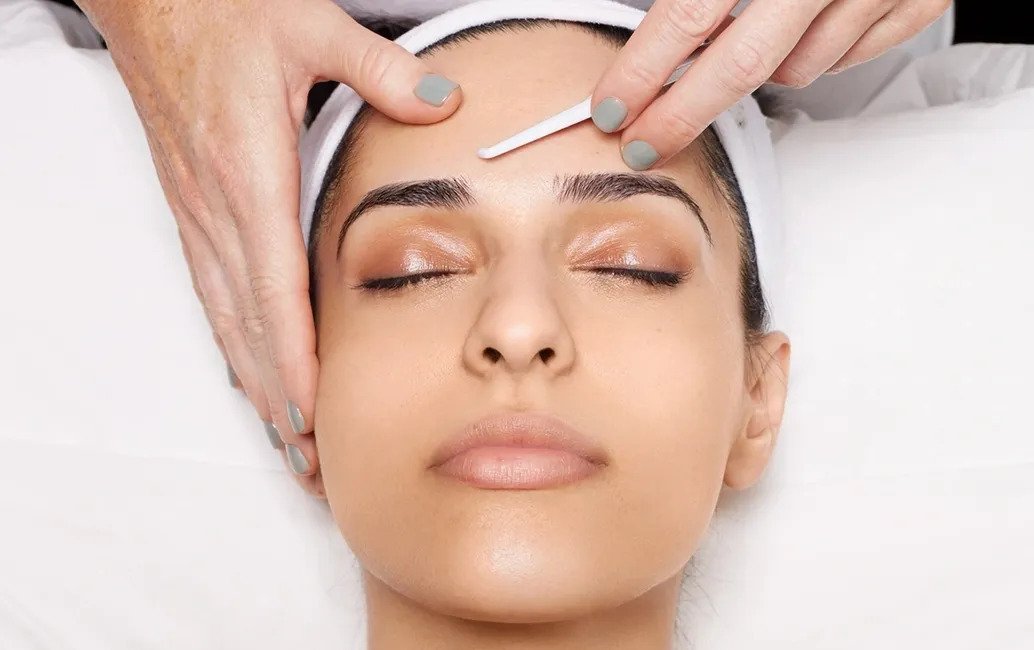Dermaplaning treatment involves using a sterile, surgical-grade scalpel to carefully shave, or scrape, the top-most layer of skin and fine hairs from the face. The concept can sound terrifying, but for many it’s the secret to clear, even, smooth and hair-free skin. The treatment doesn’t cause irritation so there’s no downtime afterwards. Our aestheticians use a 10-gauge scalpel held at a 45-degree angle to manually exfoliate the outer layers of dead skin cells and vellus hair (the peach fuzz that’s too fine to be caught by lasers). It’s an excellent rejuvenation treatment for the skin, and really delivers a youthful, bright complexion.

It can be done on any skin type except those with acne.
Eliminating dead skin cells, pollution buildup and downy hair doesn’t simply create a better base for makeup, it also allows skincare products to sink in more effectively. For the week or so after treatment, your skin will be particularly receptive to anything that you apply, so take advantage and slather on hydrating serums followed by moisturizer. As with any resurfacing treatment, skin will be more at risk from UV, so ensure it’s protected with a good SPF. If you want a deeper exfoliation, follow with a light, acid-based at-home peel. However, this can irritate, so only attempt one after you’ve had a couple of dermaplaning treatments and you understand how your skin reacts.
Let’s get this rumor done with once and for all: no matter where it grows on your body, shaving does not cause hair to grow back thicker or darker. Many people think that shaving your legs or underarms causes thicker hair growth. This is false. It’s biologically impossible for hair to grow back thicker because of shaving. Shaving simply creates a blunt tip on the hairs, which many people interpret as greater thickness. When you dermaplane, you are removing very, very fine hair called vellus hair. This hair is so thin and soft that removing it with a dermaplaning tool will have little to no impact on how it looks when it grows back. After removing the vellus hair, your skin will instantly feel and look smoother and brighter. It will take about a week for the hair to grow back, at which time you can dermaplane again.

Dermaplaning is actually one of the least painful ways to remove facial hair and dead skin—especially when compared to other hair removal techniques like sugaring, threading, and waxing. Think about it: shaving your underarms isn’t painful, so why would shaving your face be painful? Many people describe the feeling of dermaplaning as a gentle tickle or brushing sensation.
Like most exfoliation techniques, dermaplaning prevents breakouts rather than causes them. While dermaplaning can’t be performed on skin with active acne, it will prevent clogged pores and pimples from forming. By removing the top layer of dead skin cells, dermaplaning prevents these cells from getting trapped inside your pores. Less dead skin = fewer breakouts. By gently exfoliating the skin, dermaplaning also makes it easier for acne treatments and serums to penetrate into the pores to prevent and treat breakouts.
Dermaplaning is 100% safe. Dermaplaning is a type of manual exfoliation like a face scrub. However, unlike a scrub, dermaplaning doesn’t irritate or cause micro-abrasions in the skin so it won’t cause hyperpigmentation. It’s actually one of our favorite exfoliation methods for dark skin because it instantly removes the dark baby hair that can make deep skin look dull instead of radiant!